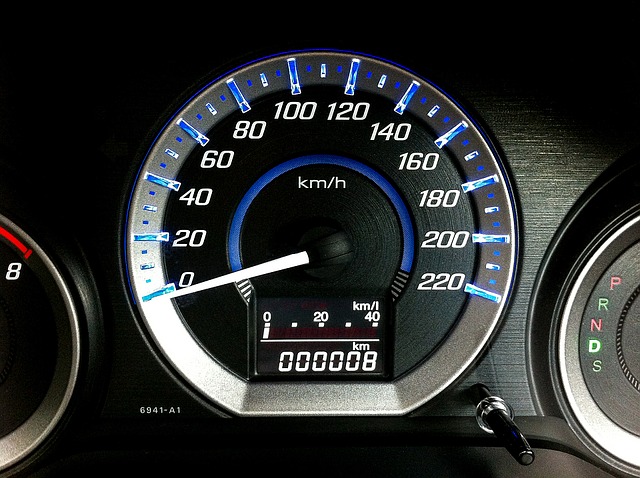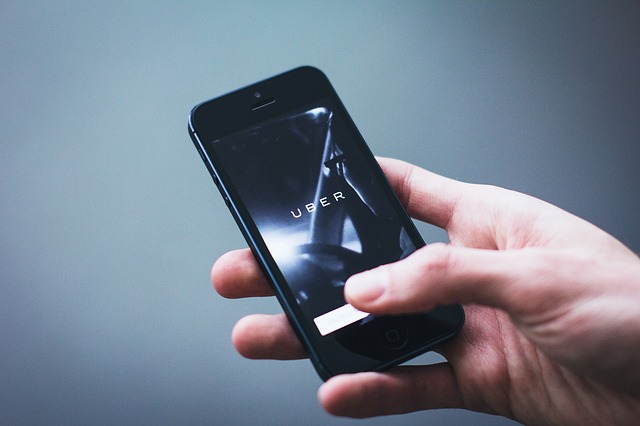The standard mileage rate was established by the IRS which can be described as a set rate where the taxpayer can claim an amount per mile for each mile driven in their vehicle for business purposes. The taxpayer must lease or own their vehicle and the vehicle must not be part of a fleet in order to be eligible.
The standard mileage rate must be claimed in the first year the vehicle is operated but it is optional for the taxpayer to claim this type of deduction in subsequent years. Actual expense method, on the other hand, tracks the costs associated with business use of your car such as gasoline, insurance, repairs, maintenance, etc.
You can use accounting software to keep track of your mileage for taxes where one can further automate their deductions as well as calculating both methods.
Let's get into the Standard Mileage Rate VS The Actual Expense Method.
Why would you choose the standard mileage rates over the actual expense method?
Well, this isn’t completely settled. Since you can't make use of both deductions, you have to do the math and settle on whether it makes more sense to deduct all vehicle-related expenses or take the standard mileage deduction of $0.545 per business mile.
The IRS strives to simplify it for the average person to track travel business-use write-offs, and that is why they established the standard mileage rate, to facilitate offset fuel, lease payments, and even depreciation.
The IRS permits for each mile driven by the taxpayer for business, charitable, medical, or moving purposes to be supplemented as a tax deduction referred to as the standard mileage rate. The standard mileage rate can be taken instead of actual costs incurred when calculating deductible automobile-associated expenses. Claiming these tax deductions will help you avoid paying 1099 taxes.

Keeping Clean Records For Vehicle Expenses
Having records and receipts for taxes containing accurate mileage logs can be incredibly intricate and monotonous. Writing down every mileage covered in your vehicle can be a tedious task that very few people will be willing to undertake. Professionals such as field sales representatives and real estate agents spend a lot of hours there, sometimes even going all day. Noting down the mileage and keeping every single receipt can be an absolute chore for them (unless they use an app to track tax expenses).
When claiming a business expense deduction for a vehicle, there are two options. You can calculate the actual costs of using your vehicle for business or either opt to claim a standard mileage deduction.
The standard federal mileage rate in 2020-2022 are:
- 56.5 cents per mile for business miles driven, down 5 cents from 2020 rates
- 16 cents per mile driven for medical or moving purposes
- 14 cents per mile driven in service of charitable organizations
Mileage deductions can be taken for charitable, medical, business, and moving purposes.
Standard Mileage Deduction vs Actual Expense Method
For any job that requires one to travel a lot by car, one should be deducting his or her business expenses in order to prevent them from overpaying their taxes. The expenses should include the vehicle expenses and the common operating expenses as well.
Either using the Standard Mileage method or the Actual Expense method can be applied to deduct the costs associated with the use of your vehicle.
One has to evaluate which method provides a bigger tax benefit for them because both write-offs cannot be taken at the same time. The basics of each method have been outlined in order to assist with the best option and two examples have been highlighted to demonstrate the difference among each.

Using the Standard Mileage Rate Deduction
If for example, you are driving for Uber or Lyft, the simplest method for calculating your deductions is to apply the standard mileage deduction. For the tax year 2015, this was 57.5 cents per mile.
You are entitled to count any miles you drive for ridesharing like Lyft or Uber 1099 taxes, as well as the miles you drive in search of passengers to pick up (even if there are no passengers in your car). On the other hand, you can’t deduct that mileage if you run personal errands in between taking customers. Only track miles for taxes that are trips for business purposes.
You need to keep a detailed mileage log for using the standard mileage rate. The date should be included in our mileage log, start time and end time, the activity concerned, and the readings from the odometer showing the beginning and end. A record of mileage driven with a passenger in the car by Uber and Lyft is summarized annually. A mileage template and expense tracking tools can maximize this mileage amount.
Opting to use the Standard Mileage deduction means that you cannot deduct gas or any other expenses associated with your car except for parking fees. If you’d prefer to deduct other items, you need to use the Actual Expenses method.
Actual Expense Method
When deducting actual expenses, you are only allowed to deduct the portion associated with your self-employed work. The following are some of the items that can be included as part of the actual expense method.
List Of Actual Vehicle Expenses You Can Claim
- In the event that you are leasing your vehicle, a portion of your lease payment can be deducted.
- Auto loan interest if you’re financing the purchase of your vehicle.
- Vehicle Insurance
- Maintenance and Vehicle Repairs
- Depreciation where you can use a vehicle depreciation table to deduct a portion of this on your taxes. However, the depreciation deduction is in proportion to your business driving time. You can use the straight-line depreciation method for this.
- Registration whereby your title can be deducted, licensing, and registration fees in all States. However, if the cost of registering your car is based on a specific formula, you might be able to deduct a portion of the cost. Confirm with a knowledgeable accountant for tax advice to decide whether deducting registration fees is an alternative for you.
- Parking fees (this can also be deducted if you opt to use the standard mileage deduction)
All your receipts must be kept and properly filed as records so that you can have all the required information conclusion on either using the standard mileage or actual expenses for a larger deduction. We recommend you use a tax receipt organizer to track and categorize your expenses so you can easily calculate your deduction.
Keep records for three years after filing in case you get audited if you claim this method.
Note: We recommend you try Bonsai Tax if you are looking for an easy solution to tracking receipts. Our software automatically records your vehicle expenses and other tax deductions. The average user saves $5,600 from their tax bill. Claim your free trial today.
Examples of calculating the expenses using the two methods
Here are a few real-life examples to give you a better understanding of these methods:

Example 1: Part-Time Driver
Assume in the year 2015 you drove 10,000 miles as total miles and you use your car for Uber or Lyft for 4,500 of those miles. Here’s how one would break down the deductions using the Actual Expenses for actual vehicle expenses:
- Gas: $1,200
- Insurance: $1,700
- Repairs: $500
- Lease Payments: $5,500
- Oil: $200
- Washes: $600
As far as car related costs are concerned, the above figures add up to $9,700 and since 50% of the time your car was used for business purposes you will have to multiply the total expenses by 50% in order to get the actual deductions which are $4,850.One the other hand, If you were to apply the standard mileage deduction method to determine your actual deduction you will have to multiply your business mileage which is 5000 miles by the standard mileage rate of 57.5 cents which will be $2,875.
It is evident in this example that the driver will clearly have a larger deduction and save more money on taxes by applying the actual expense method.

Example 2: Full-Time Driver
Let’s assume that in the year 2016 one drove 30,000 miles, and you use your car for Uber or Lyft for 20,000 of those miles. Here’s how the actual expenses method process would work in this illustration:
· Gas: $5,000
· Depreciation: $4,150
· Insurance: $2,000
· Repairs: $1,500
· Oil: $200
· Tires: $700
· Washes: $1000
If these deductions are added up, the total costs come out to $14,550. Since 75% of the time, the car was for business use. When you use the actual expense deduction method, one would multiply the total costs by 75% to get the actual deduction, which sums up to $10,912.5
If you use the Standard mileage rate method with these same figures, we would have to multiply the number of miles driven for business (20,000) by the standard mileage rate (57.5 cents per mile), which comes out to $11,500 for your Uber or Lyft taxes.
The driver will save the most on taxes if they use the Standard Mileage rate deduction method in this particular example.
It is evident in this example that either saving up on your taxes or adding up to your tax burden will be determined by the method you choose to apply to calculate your car-related actual expenses. Talk to an accountant about your tax situation if you have any questions. A full-time truck driver's taxes may be different than a rideshare drivers.
How To Avoid Unnecessary Issues That Arise As a Result Of The Qualified Miles
No matter what 1099 job you do, everyone multitasks nowadays. A trip to the doctor, to the workplace as well as to the store is usually carried out in a single run. This will be the first mistake you will be making if you attempt to count your already attained miles manually without using an application.
Basically, the calculation is fairly simple. Your business mileage is compiled from every trip you make to the workplace, your medical mileage is compiled from every trip you make to a doctor’s appointment hence every other trip totals up to your entire mileage but not your deductible mileage.
Use A Mileage Tracker
In order for one to keep his or her records as clean as possible as well as to reduce the amount of work needed to put into the process, there are two options at one’s disposal. Either start taking metros and buses for your casual trips, or initiate the use of a mileage tracking application. There are a number of mileage trackers, each offering an unusual set of benefits at a different cost. According to many professionals from various industries such as lawyers, real estate agents, realtors, and such, TripLog is one of the cheapest and most affordable full-featured mileage tracking applications available on the market.
Mileage Reimbursement
The rules are very clear when an employee drives from their non-home office to carry out business. This is regarded as deductible mileage according to the IRS. On the other hand, personal commuting expenses cannot be deducted, period.
For instance, driving from your house to your work in the morning and vice versa in the evening does not require you to deduct the mileage. Expenses arising from personal commuting are also applicable for Ubers, buses, subways, etc.
Even if employees traveled straight from their personal residence to work-related engagements (a client meeting, plumbing work, etc.), this would be regarded as a commute, and thus not reimbursable.

Commutes Vs. Using Your Car For Business
Commutes from home to work or an office is not deductible. With that said, the line gets unclear when your residence is now the site of your office. For instance, let's assume your team has all commenced working from home with no intention of reverting back to the old ways of working in the office where you are assigned to meet up a client who is located on the other side of town. Will taking a drive to meet the said client be viewed as a commute since you will be driving from your house to where you are going to work? Or would it count as business miles, since you’re using your car to go from your place of work to carry out business?
The fact that the employee’s home office is considered an official location of the company needs to be made clear and well documented. As long as this is established, then a deduction can be made by the client as a result of the drive between the home and the office.
Here's To Maximizing Your Vehicle Expenses On Your Tax Return!
To summarize, each deduction has its own unique pros and cons. Your best bet is to use a 1099 business expense tracker and a mileage tracker to see which of deduction will give the greater benefit to you.
When buying vehicles for your business, consider the section 179 deduction tax code. Known as the " Hummer Tax Loophole", this tax code states that the total deduction, including the Section 179 expense deduction and Bonus Depreciation is $11,160 for cars while for vans and trucks, the total deduction may be limited to $11,560.
Again, we recommend you talk to a tax professional if you have any questions about the actual vehicle expenses method or standard mileage for the larger deduction.






